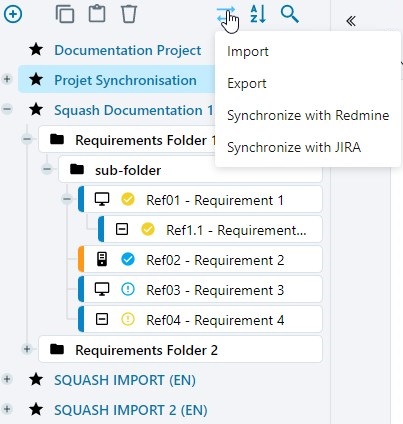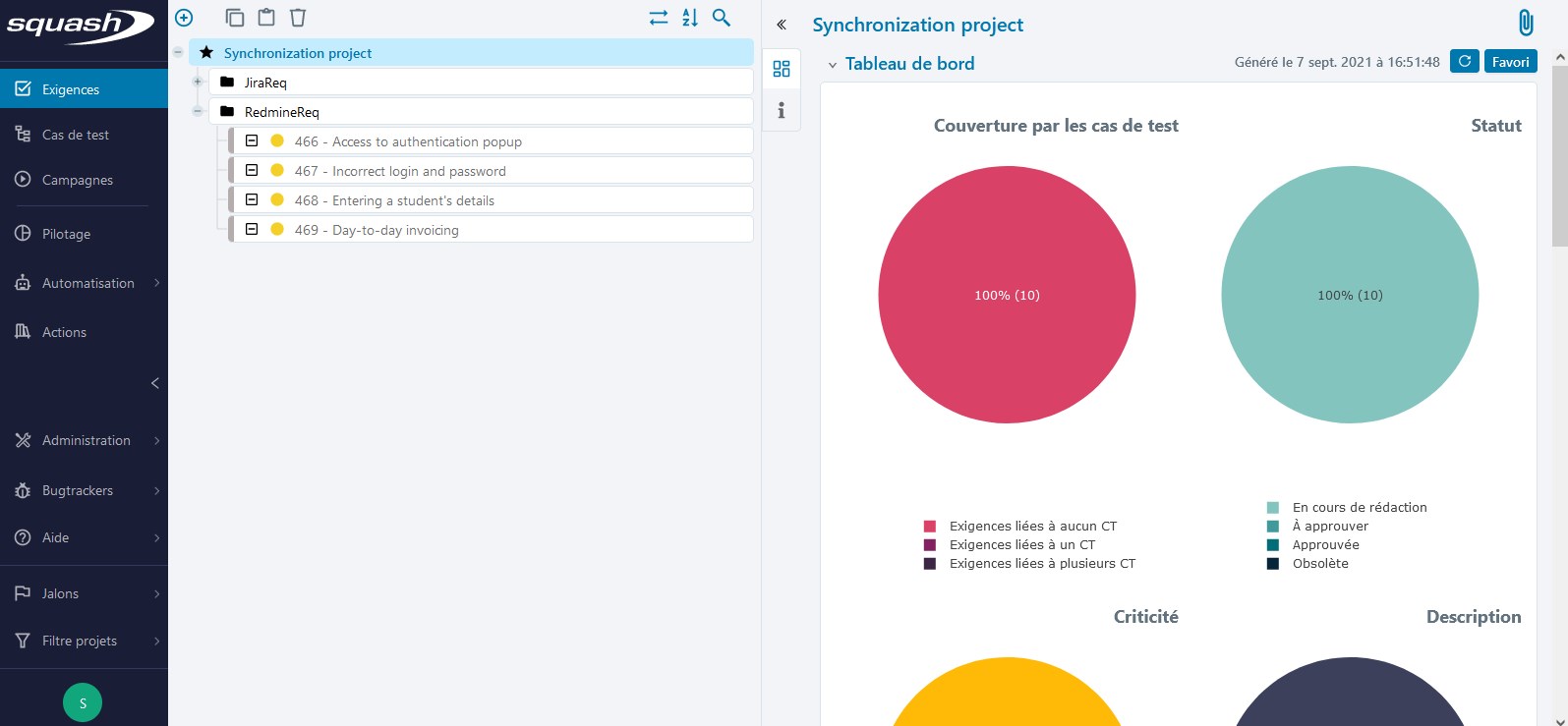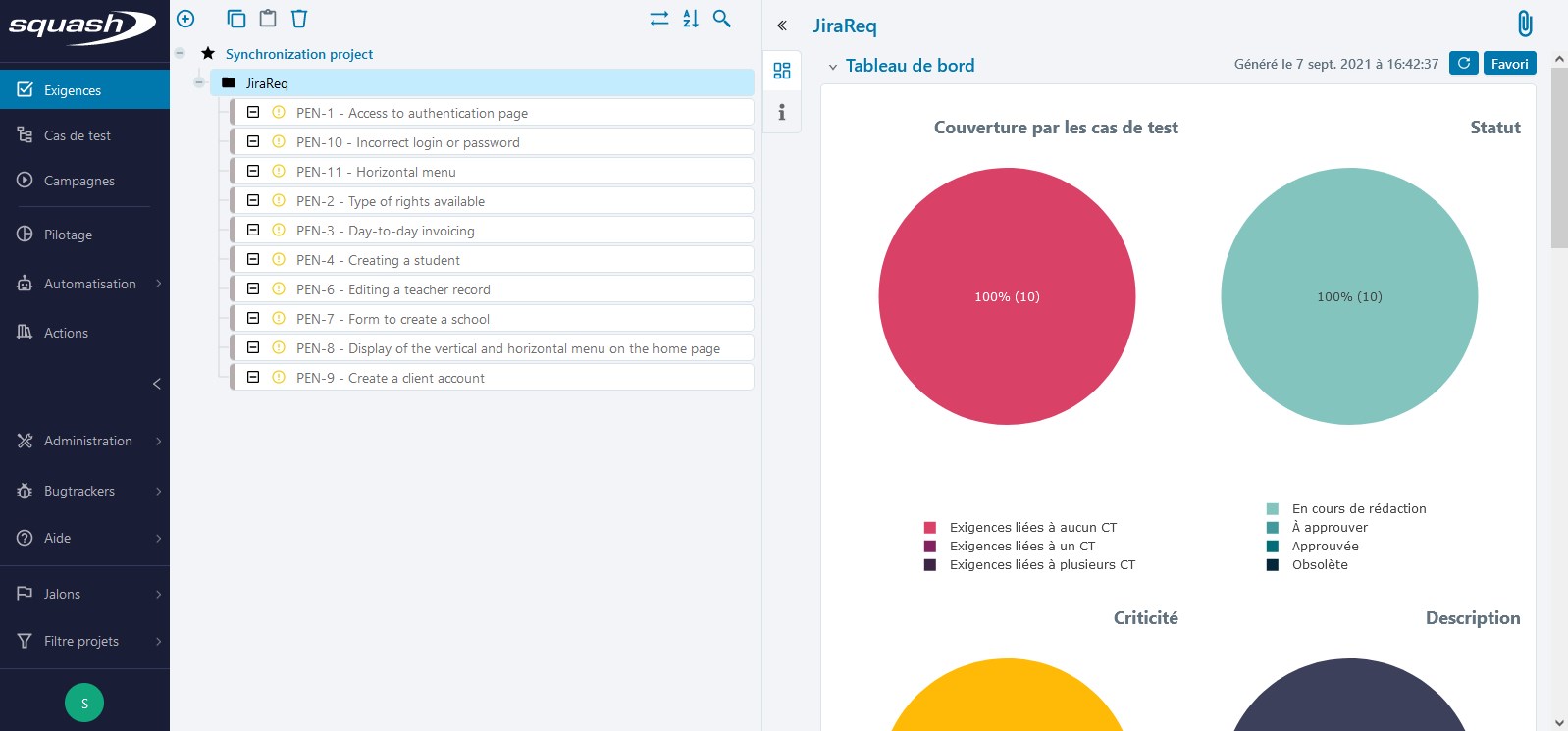Synchronize Requirements from a Third-Party Tool
The Redmine Requirements, Jira Requirements and Xsquash4Jira plugins enable you to synchronize issues as requirements from Redmine or Jira to Squash TM.
The Xsquash4Jira plugin's synchronizations are managed automatically. However, that is not the case for the Redmine Requirements and Jira Requirements plugins. For these plugins, you must manually start the synchronizations from the Requirement workpace.
To manually synchronize issues with the Redmine Requirements or Jira Requirements plugins, you must:
- Select the name of the project that is configured with the plugin
- Open the menu [Import/Export]
- Click on 'Synchronize with Redmine' or 'Synchronize with Jira'
- Enter your credentials to log onto Redmine or Jira if they are not already saved in "My Account"
- Accept the synchronization request
To be able to synchronize issues and use the "Synchronize with Redmine" and "Synchronize with Jira" options, you must meet these three requirements:
- These plugins must be activated and configured for the project
- You must have an administrator profile in Squash TM
- You must have a Jira or Redmine account to connect to the tool

Issues are synchronized as requirements in the folder specified in the configuration of the plugin for the project. If no folder is specified, issues are synchronized at the root of the project in the Requirement workspace.
Synced requirements appear grayed out in the tree. ALl their fields can be edited.
You can only synchronize issues from Redmine to Squash TM and from Jira to Squash TM.
Learn more
To learn more about plugin configuration for projects, please visit these pages:
- Configure Redmine Requirements
- Configure Jira Requirements
Synchronize with Redmine Requirements

The perimeter of the synchronization of Redmine issues -- done by the user in the Requirement workspace -- is defined by:
- The Project/Filter ID couples configured for the Squash TM project
- The Redmine access rights of the user doing the synchronization
Indeed, if the user does not have at least reading rights for all the Redmine projects in the configuration, the syncrhonization of the issues will be incomplete. Only the issues that can be seen by the user will be synchronized.
Since the synchronization is not automatic, you must regularly resynchronize issues to retrieve:
- New Redmine issues taken into account in the perimeter
- New field values of issues that were synchronized
- Issue deletions (depending on the option chosen in the plugin's configuration)
- Additions and deletions of links between requirements
Synchronize with Jira Requirements

The perimeter of the synchronization of Jira issues -- done by the user in the Requirement workspace --is defined by:
- The Project/Filter Key couples configured for the Squash TM project
- The Jira access rights of the user doing the synchronization
Indeed, if the user does not have at least reading rights for all the Jira projects in the configuration, the syncrhonization of the issues will be incomplete. Only the issues that can be seen by the user will be synchronized.
Since the synchronization is not automatic, you must regularly resynchronize issues to retrieve new issues and chagnes made on issues that were already synchronized.
Learn More
The Jira Requirements plugin is an old plugin that is going to be progressively replaced by the Xsquash4Jira plugin.
To learn more about the Xsquash4Jira plugin, please visit these pages:
- Configure Xsquash4jira in Squash TM
- Synchronize Jira agile objects in Squash TM